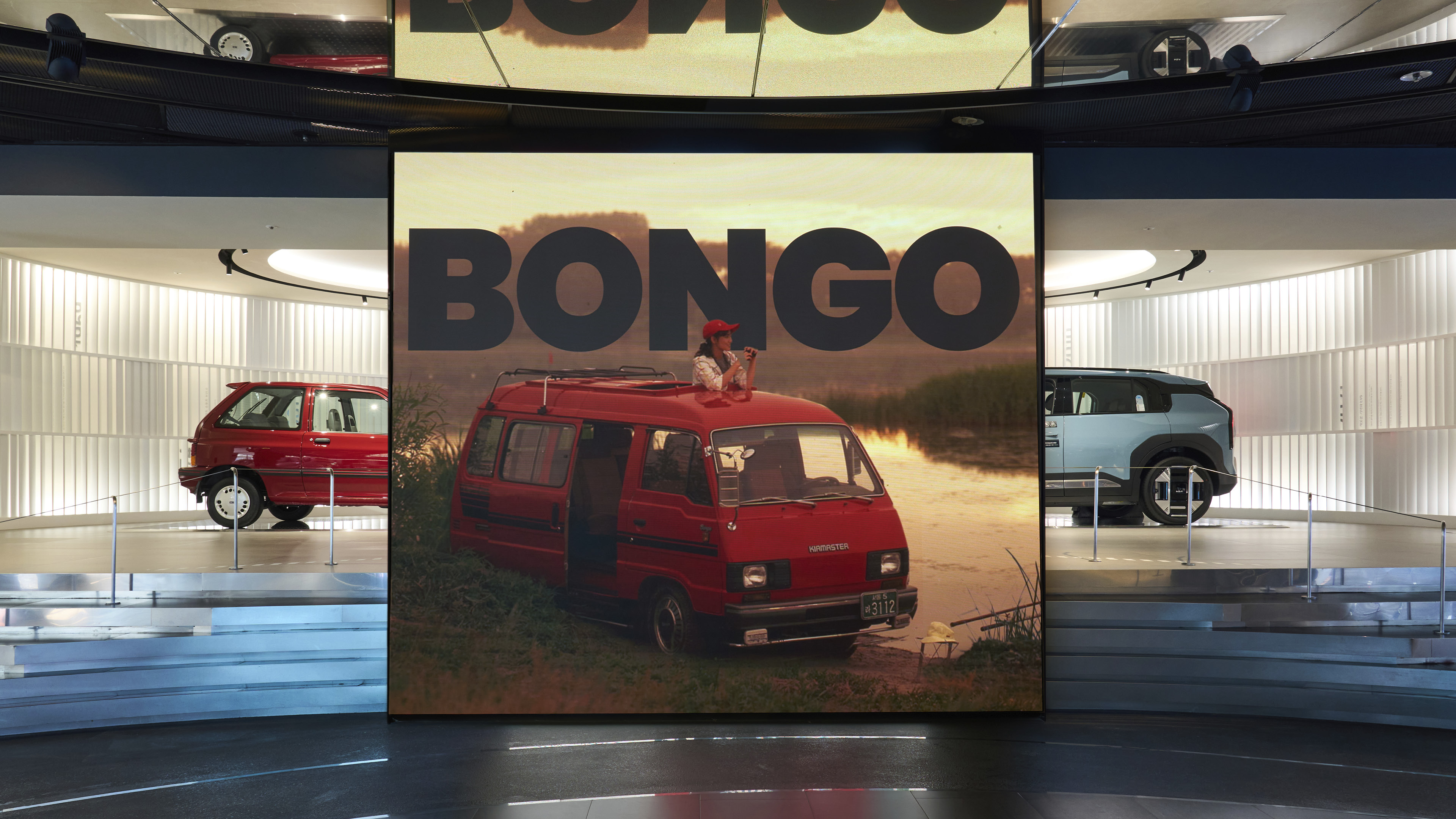
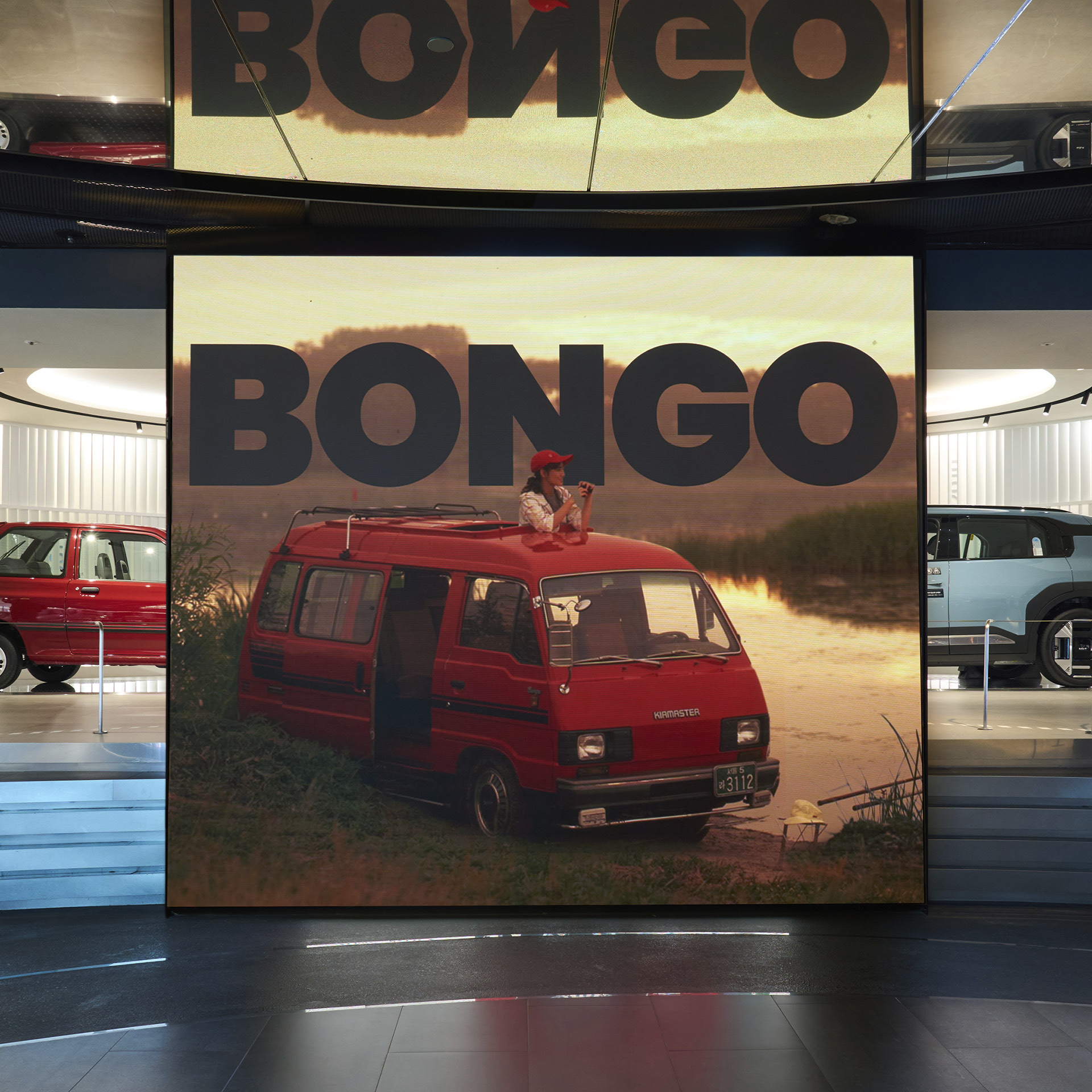


2025.02.14 Kia
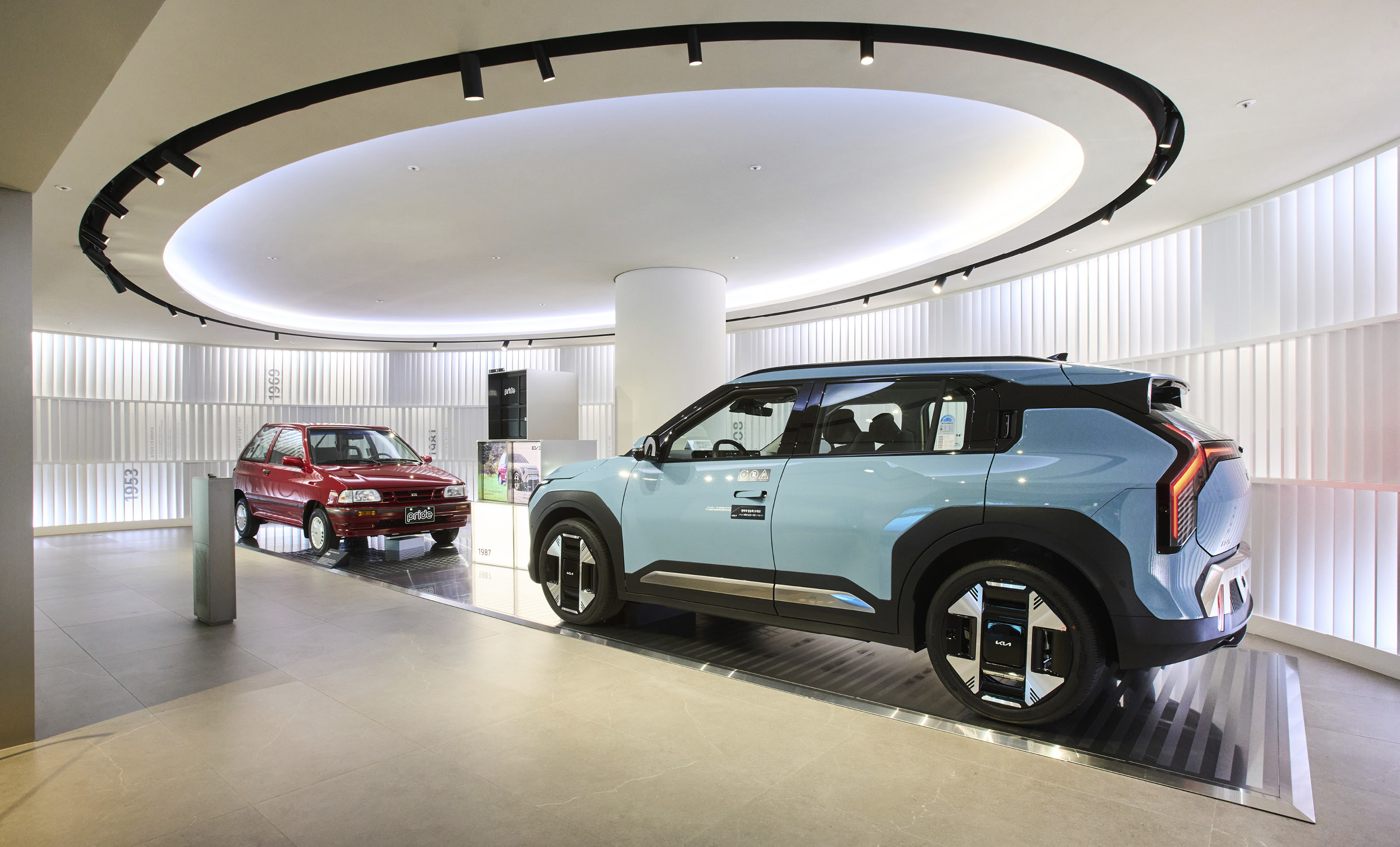
Kia’s second heritage exhibition, From Moments to Movement, is now open at the brand experience center Kia360 in Apgujeong, Seoul. The exhibition captures Kia's journey across the past, present, and future, showcasing how the defining moments of its 80-year history have collectively evolved into a forward-thinking movement for a brighter tomorrow.
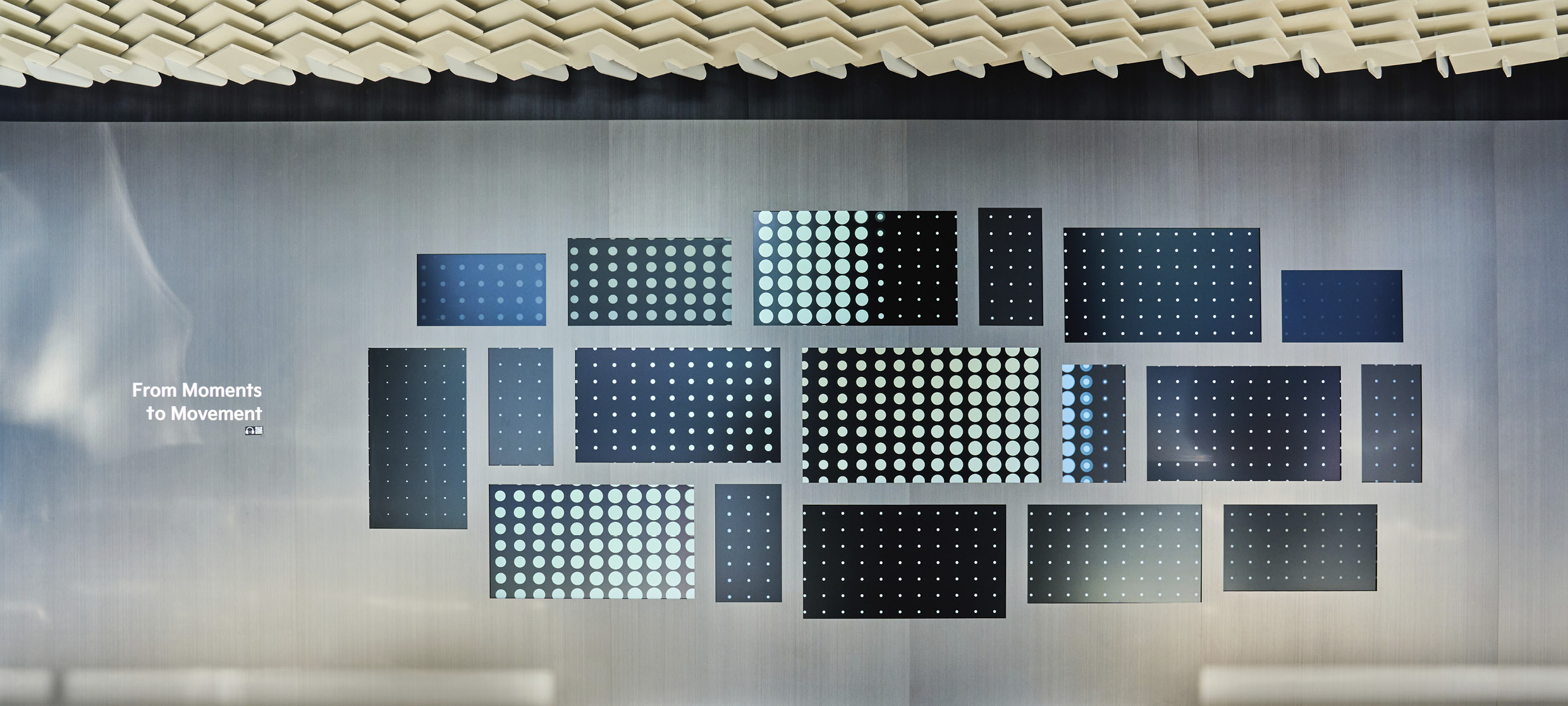
As you step inside the exhibition, the first feature that greets you is Journey of Kia. This opening installation sets the tone for the heritage showcase by visually illustrating how points representing significant moments converge to form lines of movement. These lines then fill spaces, symbolizing how Kia’s mobility solutions enrich and add vibrancy to our lives.
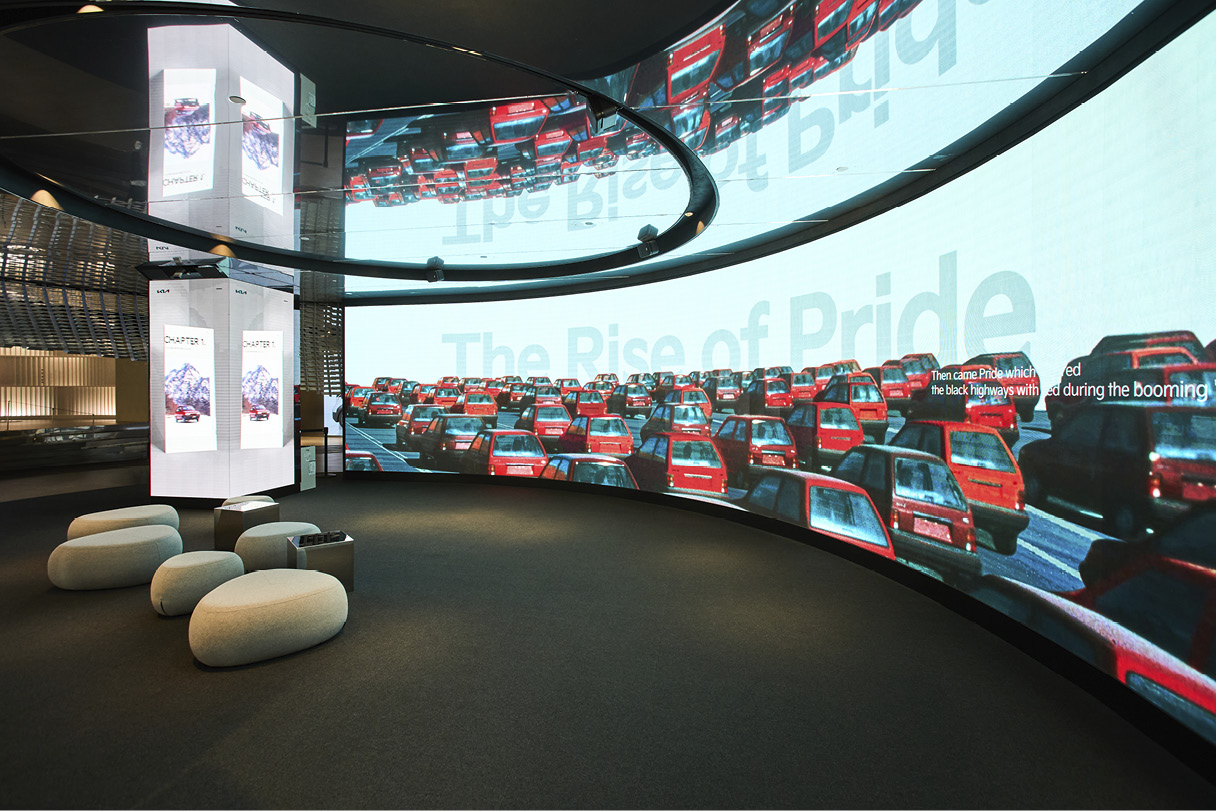
At the heart of the exhibit, surrounded by expansive screens, a video sequentially narrates Kia’s 80-year history and its defining heritage DNA. The first chapter explores Transformations in Everyday Life, highlighting how Kia has provided freedom of movement, from the iconic ‘Samchuly’ bicycle to today’s EV lineup and the upcoming PBVs. Visitors are invited to reflect on the landmark mobility innovations that define Kia’s legacy.
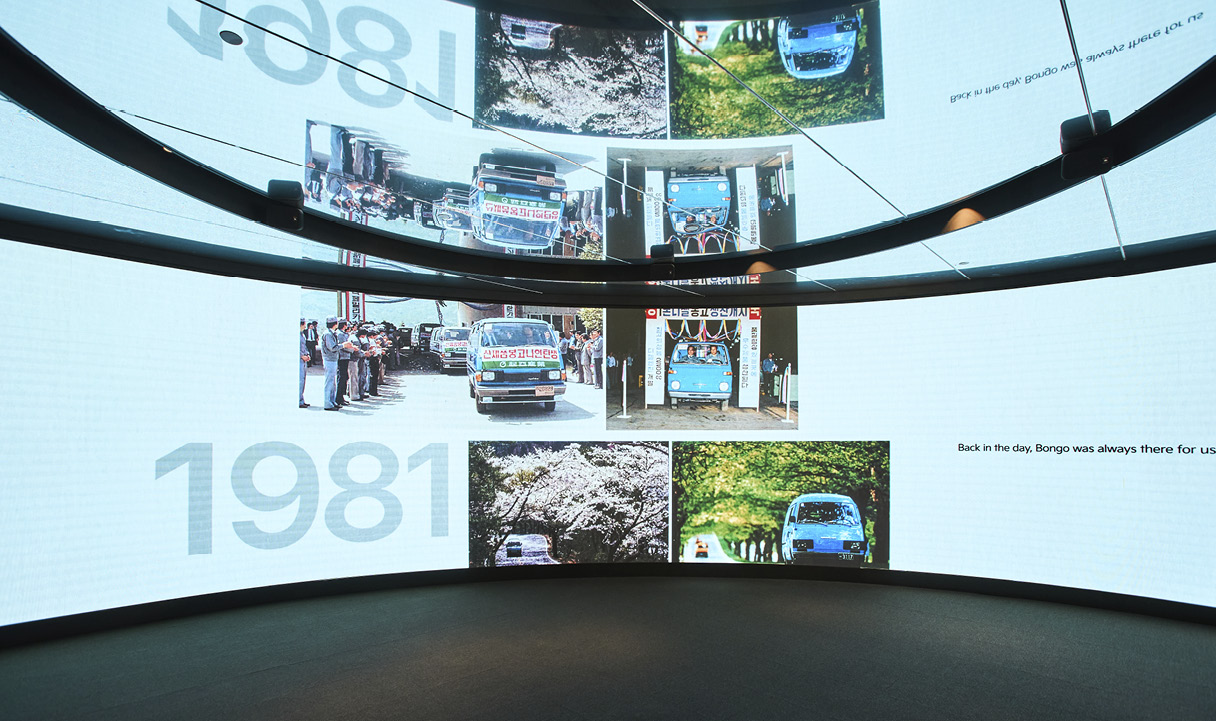
The next chapter, Transformations in Industry, showcases pivotal moments where Kia turned challenges into opportunities, spotlighting models such as the K-360, Bongo, and Carnival. The ‘Transformations in Society’ celebrates Kia’s relentless spirit of innovation, featuring iconic vehicles like the Sportage, Soul, and K5, which epitomize Kia’s design philosophy. The final chapter, ‘A New Movement’, focuses on Kia’s dynamic evolution with models like the EV3, EV6, EV9, and PBVs.
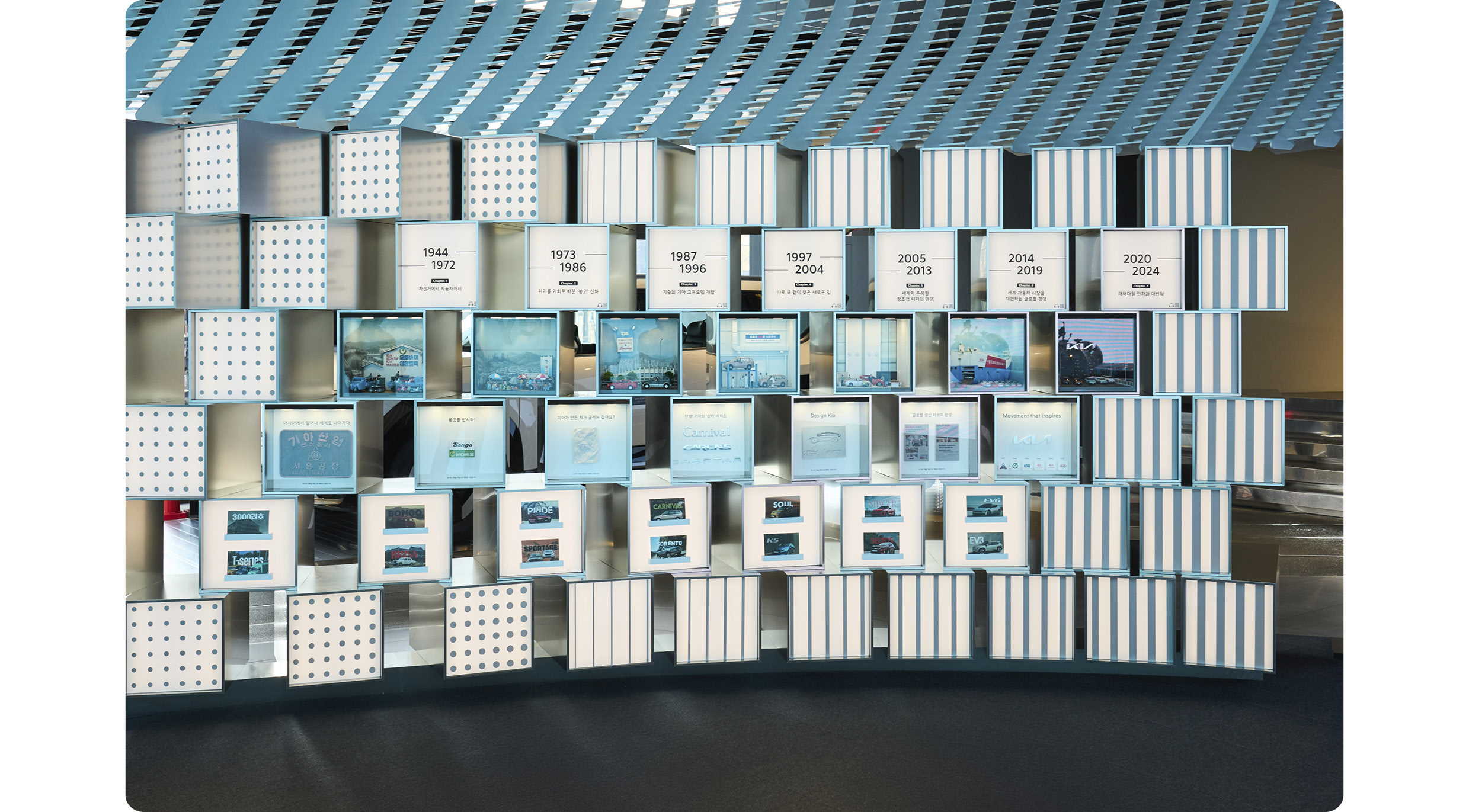
Beyond the screens, the Archive provides a comprehensive look at Kia’s 80-year history. Divided into seven themes—Bongo’s legacy, proprietary model development, the "Three Cars" series (Carnival, Carens, and Carstar), design management, global expansion, paradigm shifts, and transformative innovation—the archive showcases dioramas, photographs, and historical artifacts. These materials evoke the determination and passion of Kia’s employees, leaving visitors with a deep sense of connection to the brand’s legacy.
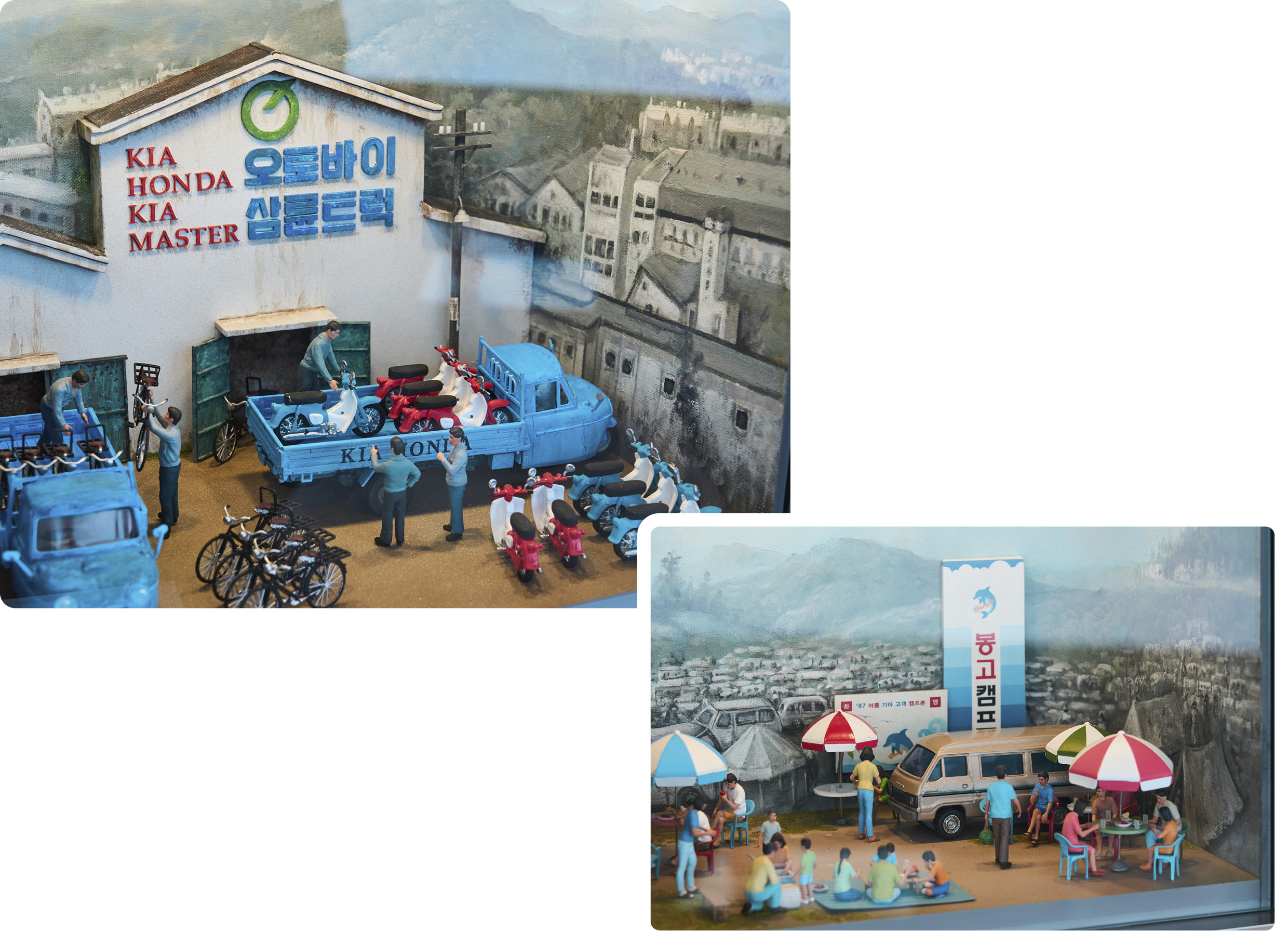
Kia’s beginnings trace back to manufacturing bicycles, motorcycles, and three-wheeled vehicles. Living up to its name, meaning "Rising from Asia, advancing to the world," the company expanded its mobility business ambitiously from bicycles to automobiles. However, Kia faced a major challenge in 1981 when regulatory reforms forced the company to cease its passenger car production.
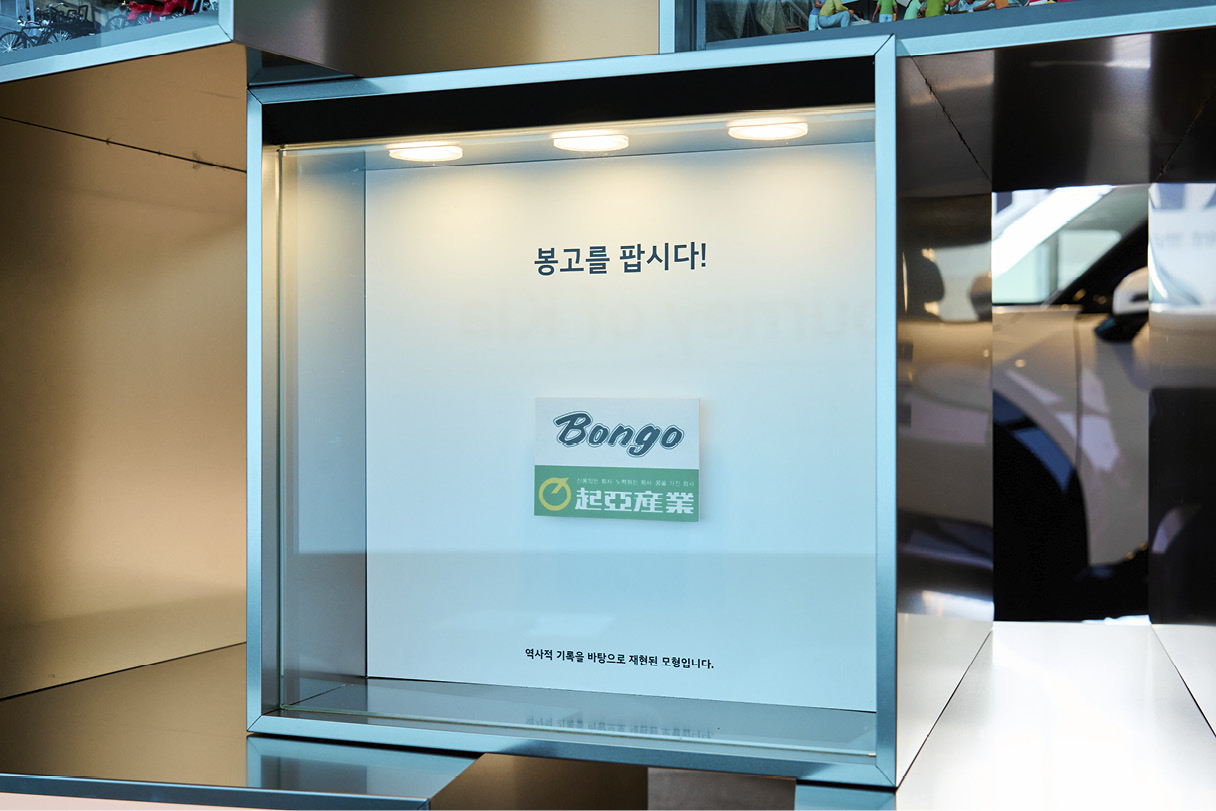
To adapt, Kia pivoted all its resources toward a single model, launching the Bongo Truck in 1980 and the Bongo Van in 1981. Employees at the time reportedly greeted each other with the rallying cry, “Let’s sell Bongos!”—a testament to their collective determination. The Bongo’s immense popularity, fueled by Korea’s family-oriented culture and the leisure boom of the 1980s, proved that a well-made vehicle could overcome even the toughest challenges.

One of the exhibition’s standout features is the Highlight Moments video. By artistically reimagining photos of Kia’s key models, the video evokes the feeling of flipping through the pages of a glossy automotive magazine. A particularly memorable sequence showcases Kia’s historical advertisements, culminating in the formation of its current logo—a powerful visual encapsulation of the brand’s evolution.
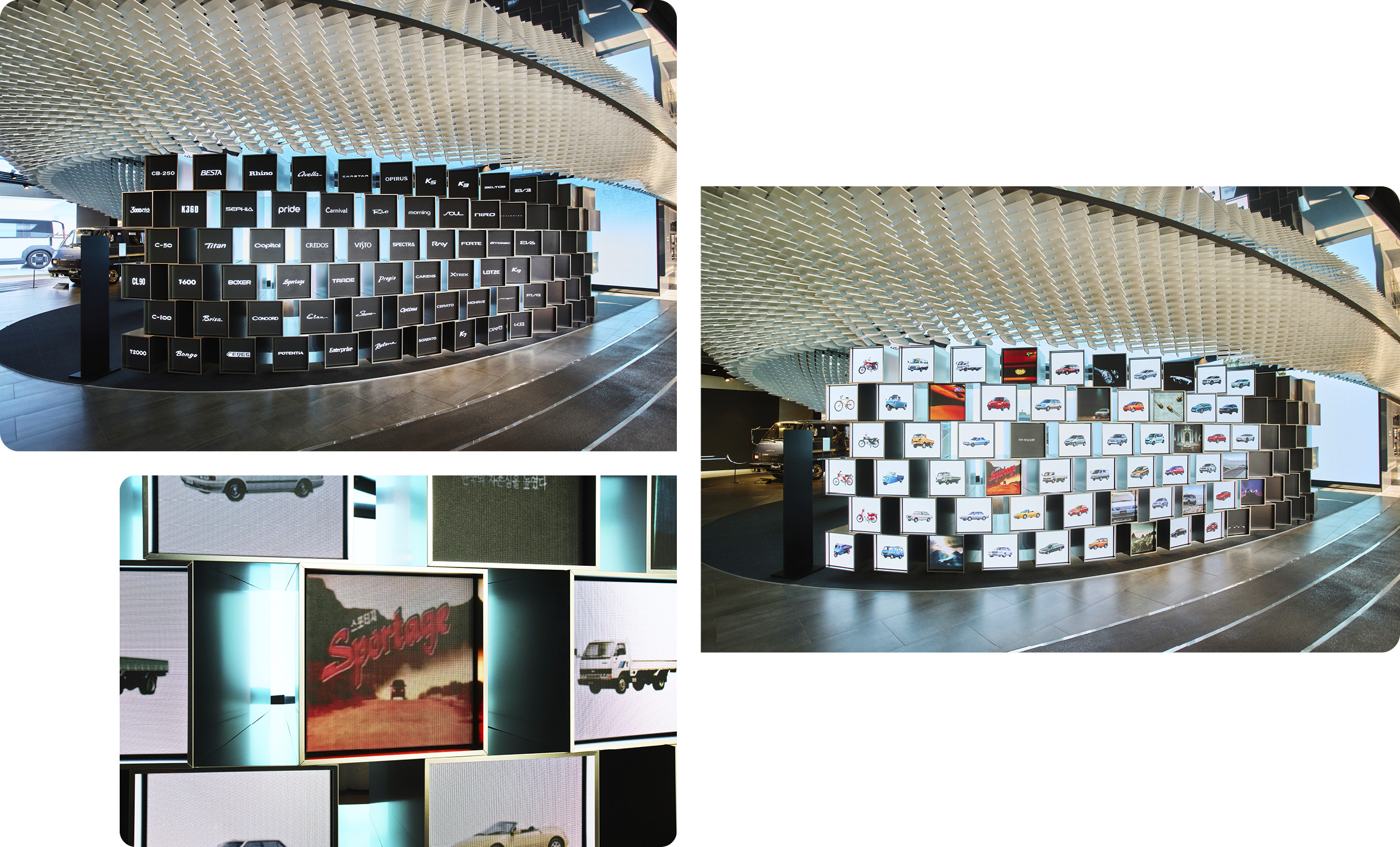
The journey continues with the Moments Archive, a centerpiece installation embodying 80 years of history. Composed of over 80 square-shaped sculptures stacked in varying orientations, this interactive exhibit displays photos and advertisements of Kia’s iconic models. Each sculpture not only encapsulates the brand’s milestones but also evokes nostalgia by telling the stories behind these pivotal moments in Kia’s history.
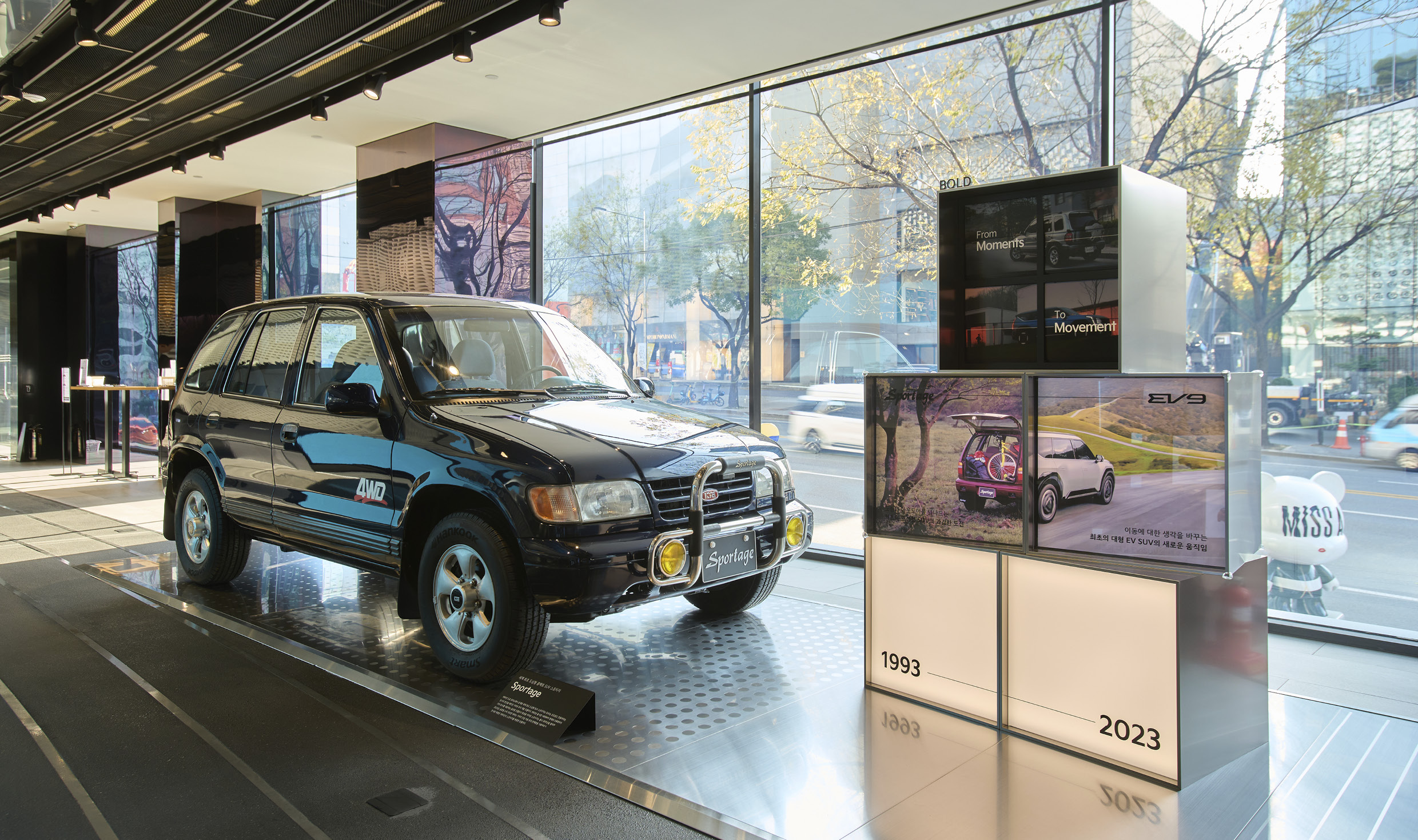
Kia’s ability to bridge its past, present, and future is a highlight of the From Moments to Movement exhibition. This concept is brought to life through the brand’s Heritage DNA, encapsulated in three themes: Bold, Enriching, and Progressive. The exhibition pairs historical Kia vehicles with their modern counterparts to illustrate the continuity of the brand’s core values. Small, interactive displays placed between the cars offer insights into the journey from the launch of each historical model to its modern evolution.
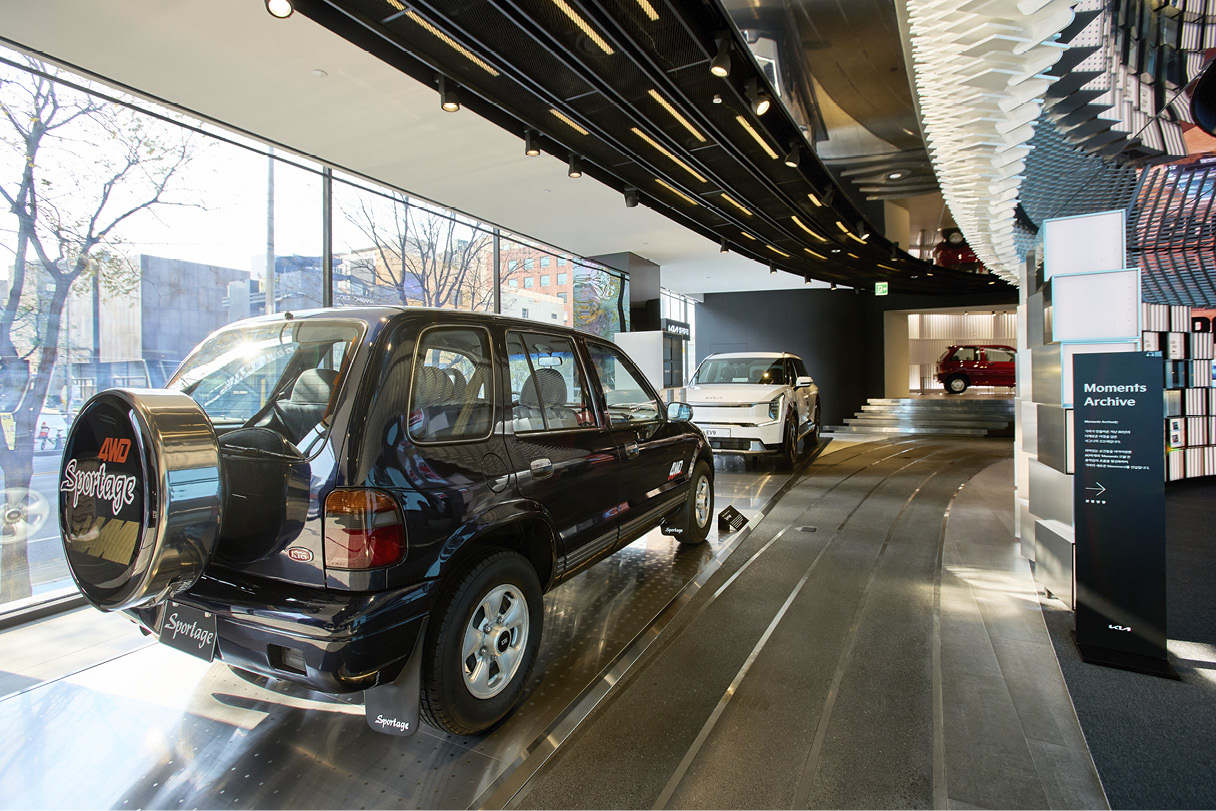
The Bold section showcases Kia’s trailblazing spirit with the world’s first urban SUV, the first-generation Sportage, displayed alongside Kia’s flagship electric SUV, the EV9. The Sportage revolutionized the urban SUV market by entering uncharted territory, while the EV9 redefines perceptions of mobility with its rare status as a large electric SUV. Together, they embody Kia’s relentless drive to innovate.
1st Generation Sportage in Kia Heritage Exhibition
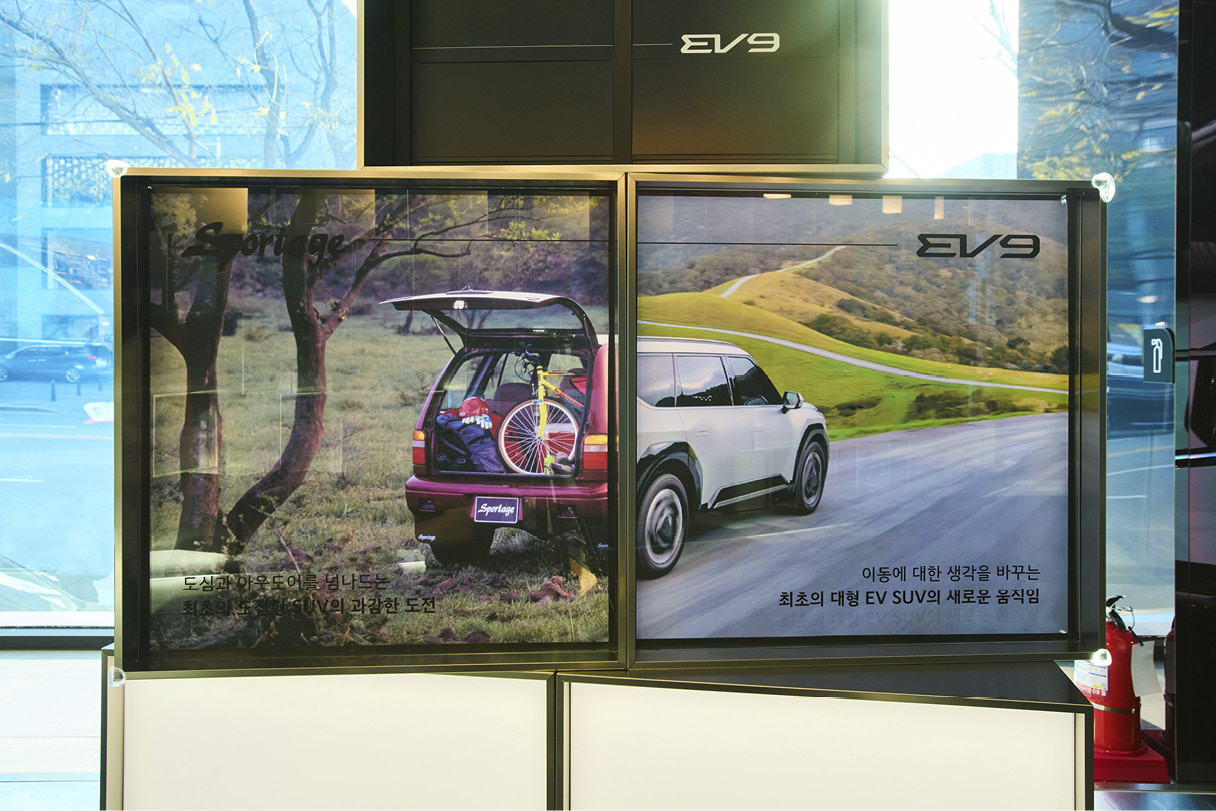
The display between these vehicles is equally striking, featuring dynamic visuals and a kinetic flip-display design that aligns perfectly with the exhibition’s theme. Opting for mechanical flip displays instead of digital screens underscores Kia’s commitment to thoughtful, detail-oriented design.
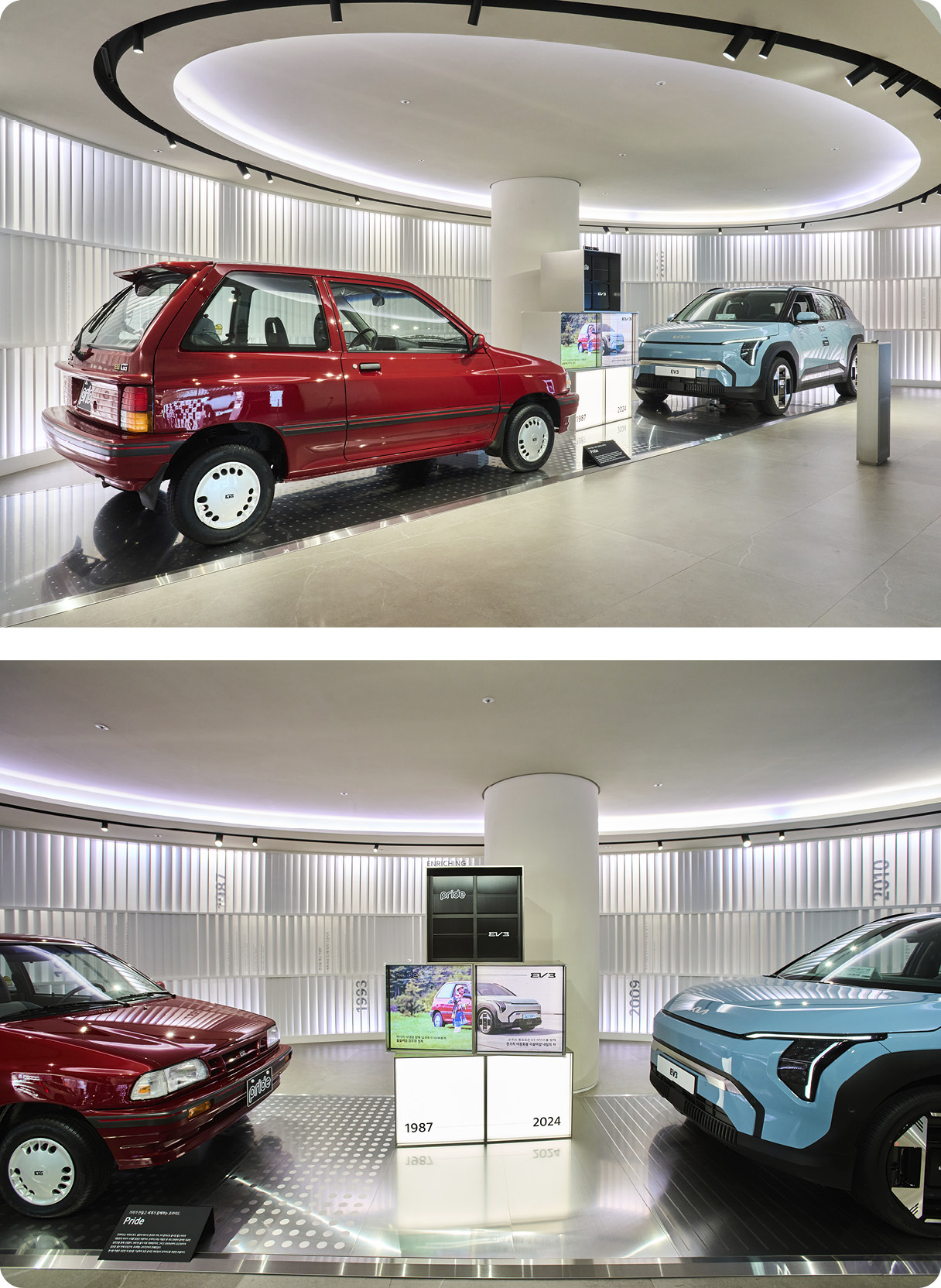
The second theme, Enriching, features the Pride and EV3. The Pride emerged during an era when owning a family car became a norm, enriching everyday lives with its practicality and affordability. Similarly, the EV3, a cornerstone of Kia’s push for electric vehicle accessibility, enhances modern lifestyles with its eco-friendly and innovative design. Both models share a common mission: to bring vibrancy and convenience to their owners' daily lives.
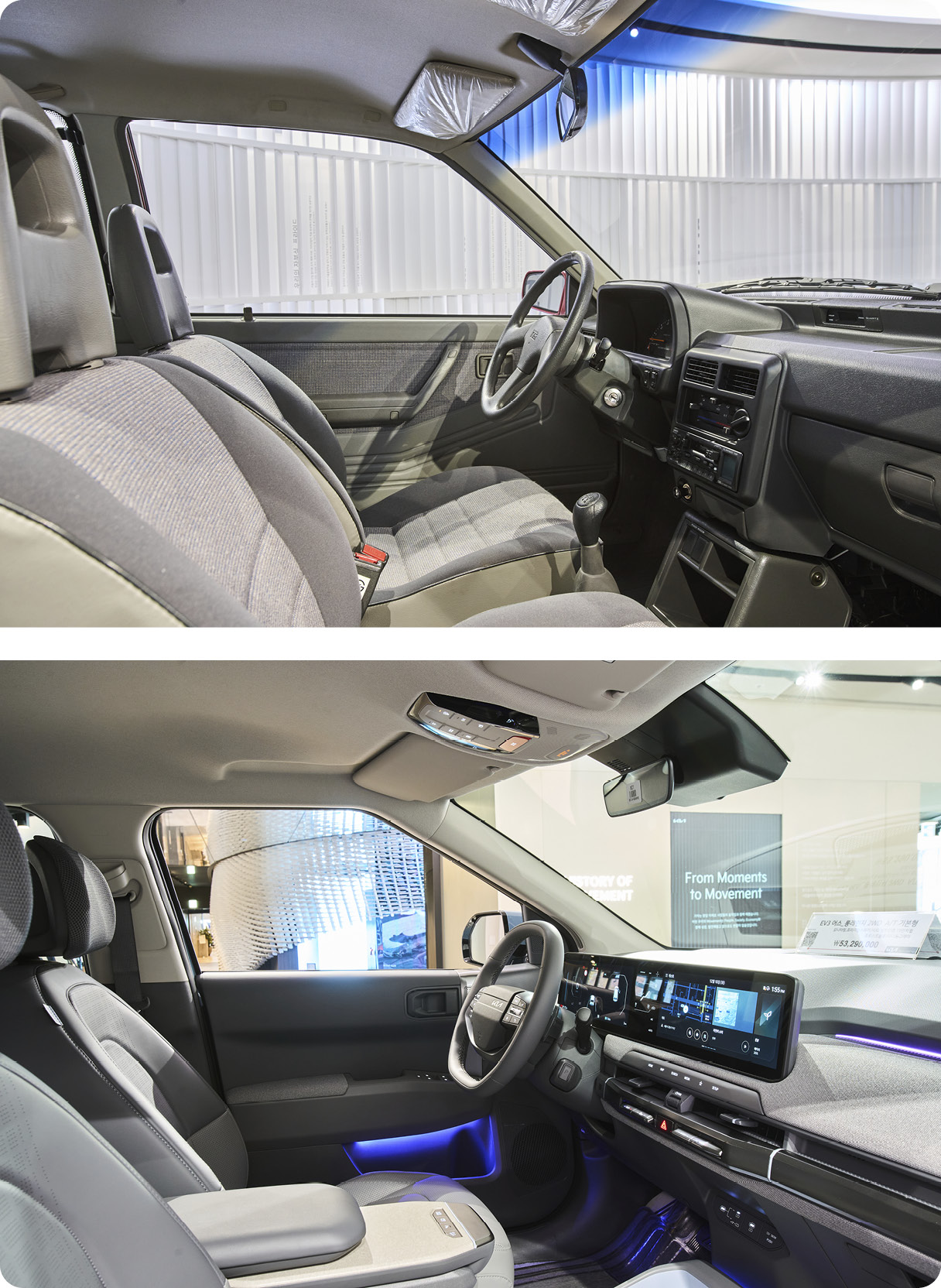
Comparing the interiors of the Pride and EV3 showcases how Kia's vehicles have enriched our lives over the decades. In the 1980s, the Pride served as an economical companion for comfortable family travel. Fast forward to the 2020s, the EV3 takes on a similar role but as an eco-friendly partner for modern families. The minimalist design of their interiors strikes a familiar chord, reflecting Kia’s enduring focus on functionality and comfort.
kia pride
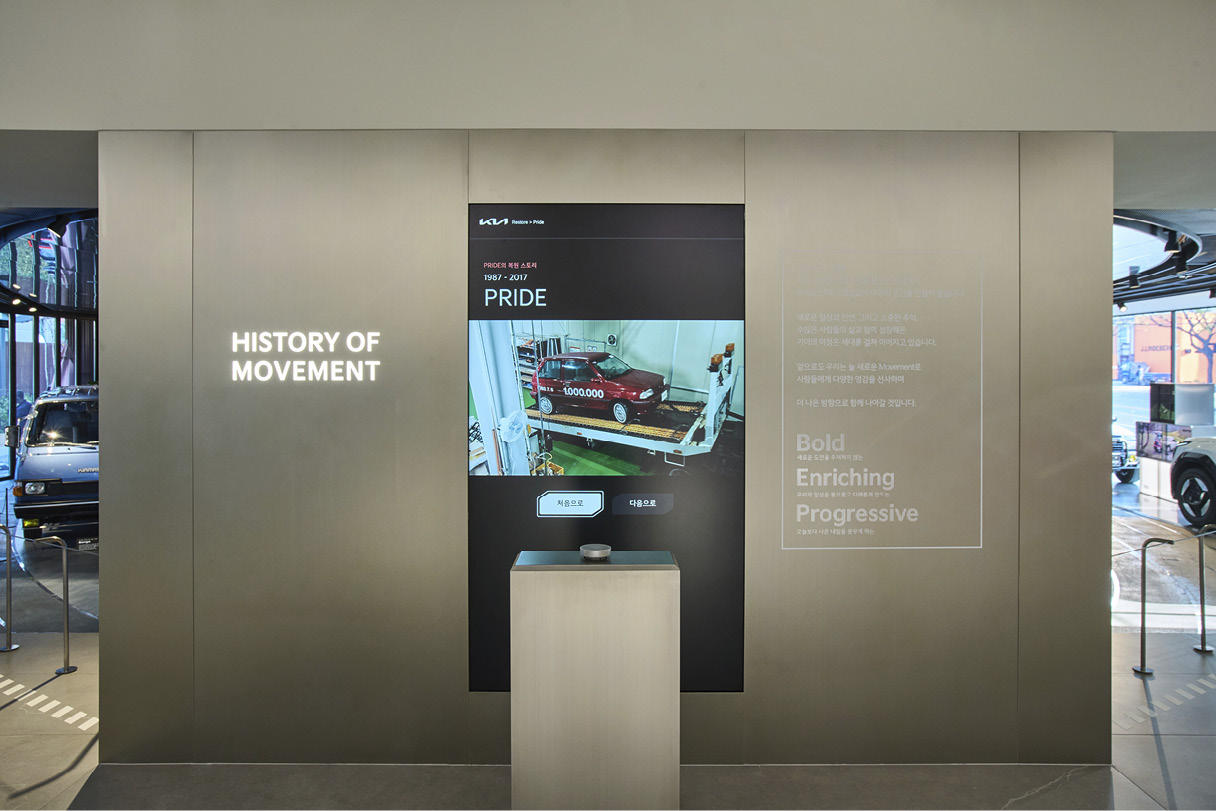
A nearby monitor allowed visitors to explore a wealth of information about the exhibition, with the option to select specific content. Videos showcased the restoration processes for models on display, including the Sportage, Pride, and Bongo 9. For instance, the Pride exhibited in this showcase was a meticulously maintained vehicle commemorating its production milestone of one million units, with restored lighting fixtures, tires, and both interior and exterior finishes.
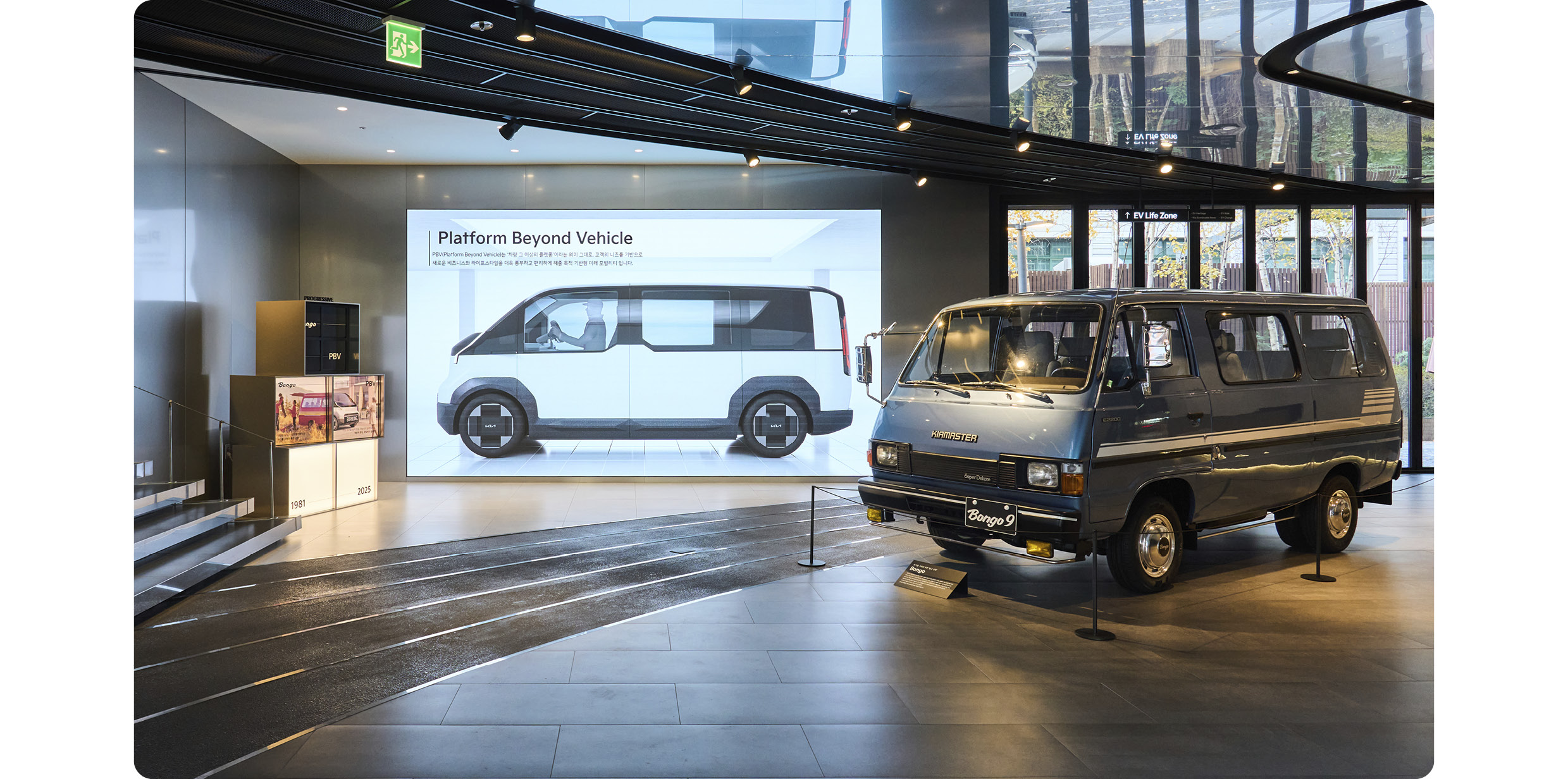
The final keyword, Progressive, was represented by the Bongo 9 and the PBV. These two models are connected by their versatile functionality. The Bongo 9, carefully restored by Kia, stood as a testament to its rich history, while the PBV was showcased through screens depicting its multifunctional potential. Just as the Bongo 9 served as a spacious vehicle for large family trips, leisure activities, and mobile businesses, the PBV aims to transcend traditional transportation, offering new and diverse lifestyle possibilities as a true platform for innovation.
Kia Bongo9
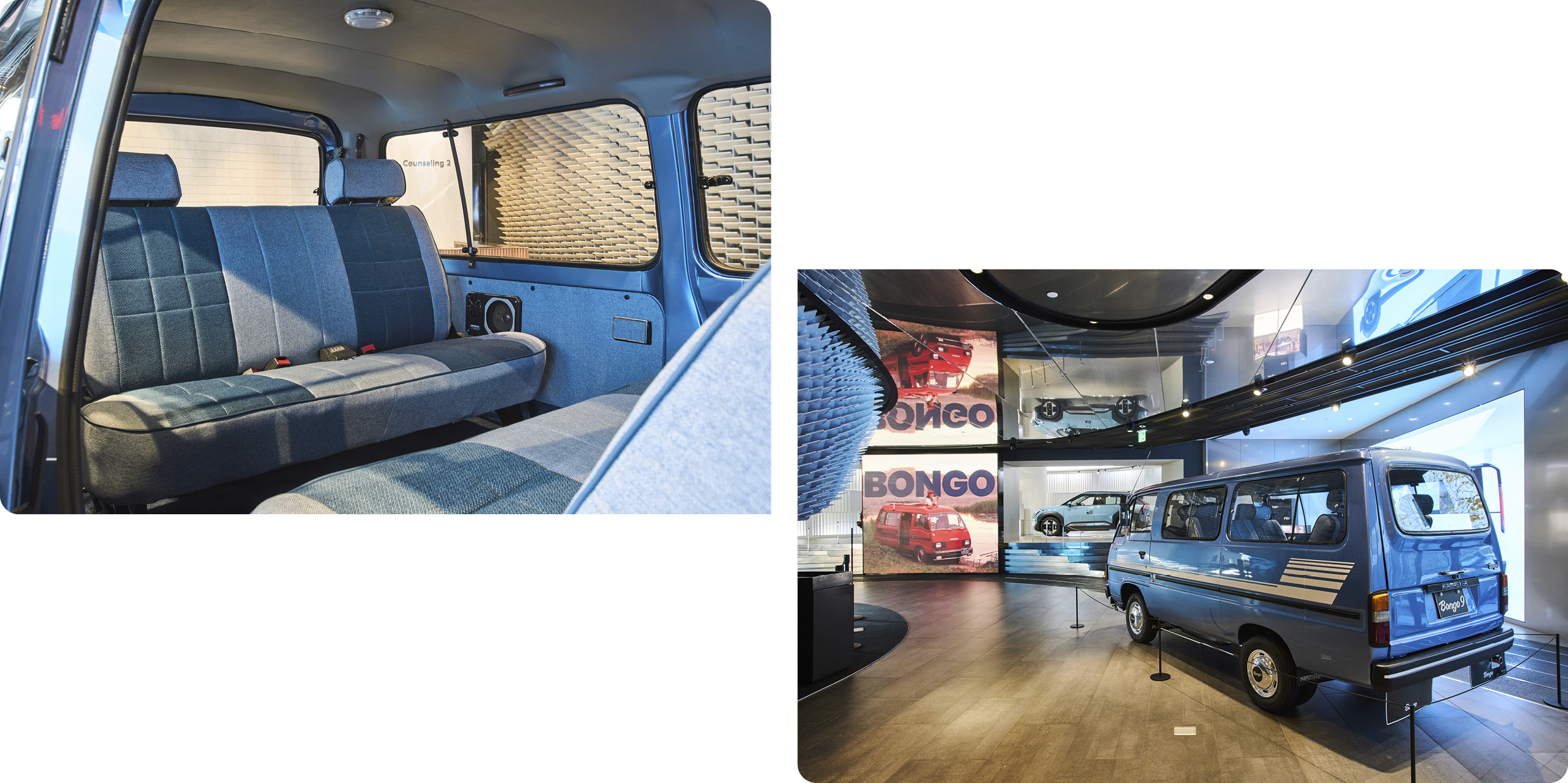
The interior of the exhibited Bongo 9 vividly demonstrates how a spacious vehicle can spark endless possibilities. At the same time, it heightens anticipation for Kia's upcoming PBV, set to debut in this year. Just as the Bongo was a vital vehicle for South Korea, making a significant societal impact in its time, the PBV is poised to become a cornerstone of a better future amid the transformative wave of electrification.
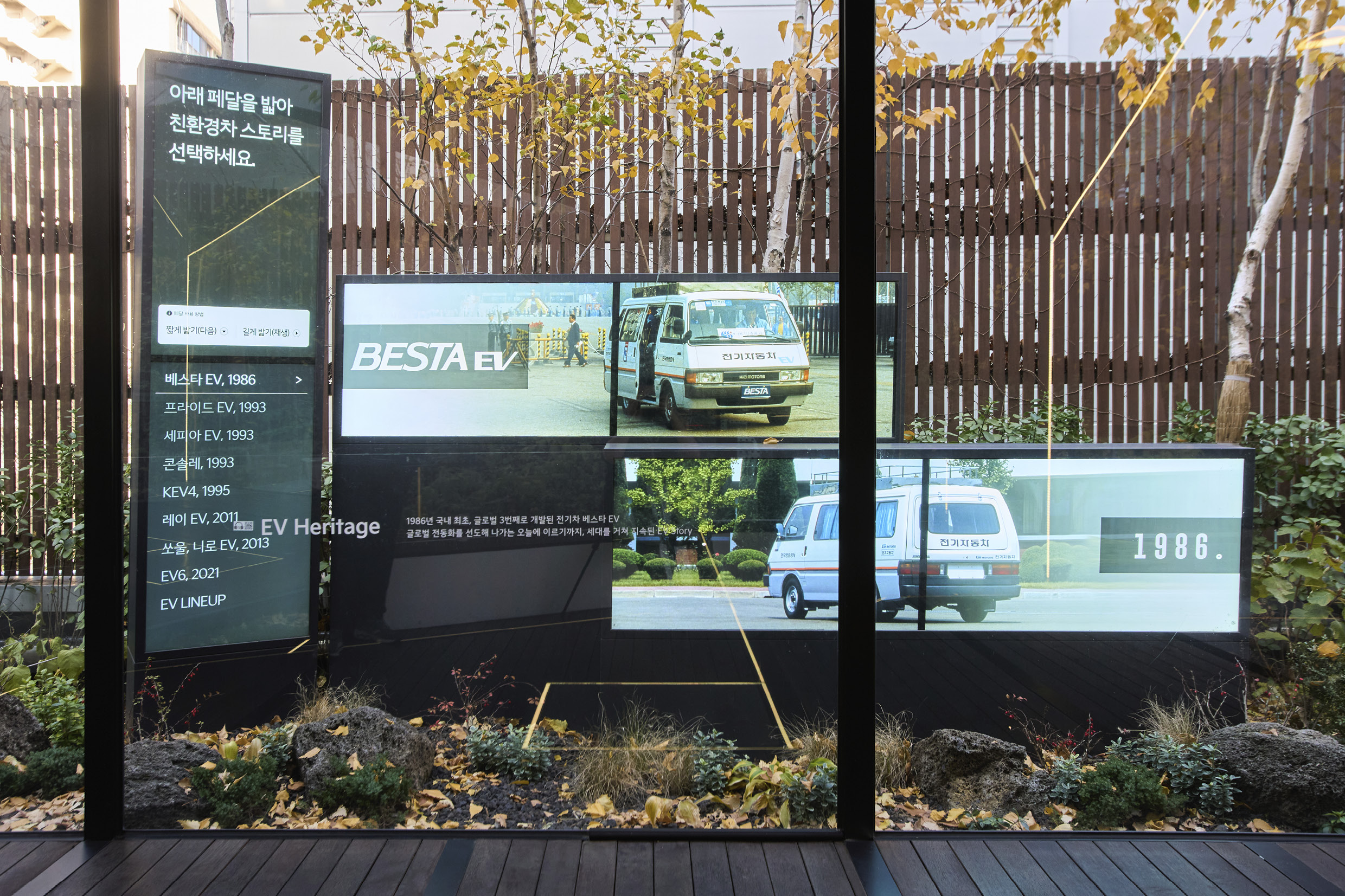
The outdoor EV Heritage space showcased Kia's history of developing eco-friendly vehicles. Kia has long been a pioneer in researching diverse environmentally conscious cars, and the exhibition presented information about nine of these models in an engaging format. Each model's story added an extra layer of intrigue, highlighting some truly legendary vehicles.
For example, the Vesta EV, introduced during the 1986 Asian Games, was South Korea's first and the world's third electric vehicle. The Pride EV featured integrated solar panels, while the Sephia EV represented an electric version of Kia's proprietary Sephia model. Another standout was the solar-powered vehicle ConSole, which successfully crossed Australia during the 1993 World Solar Challenge. Finally, the 1995 Seoul Motor Show debuted the KEV4, a city-oriented hybrid car. These displays illustrated Kia's innovative spirit and bold challenges in the pursuit of automotive advancement.
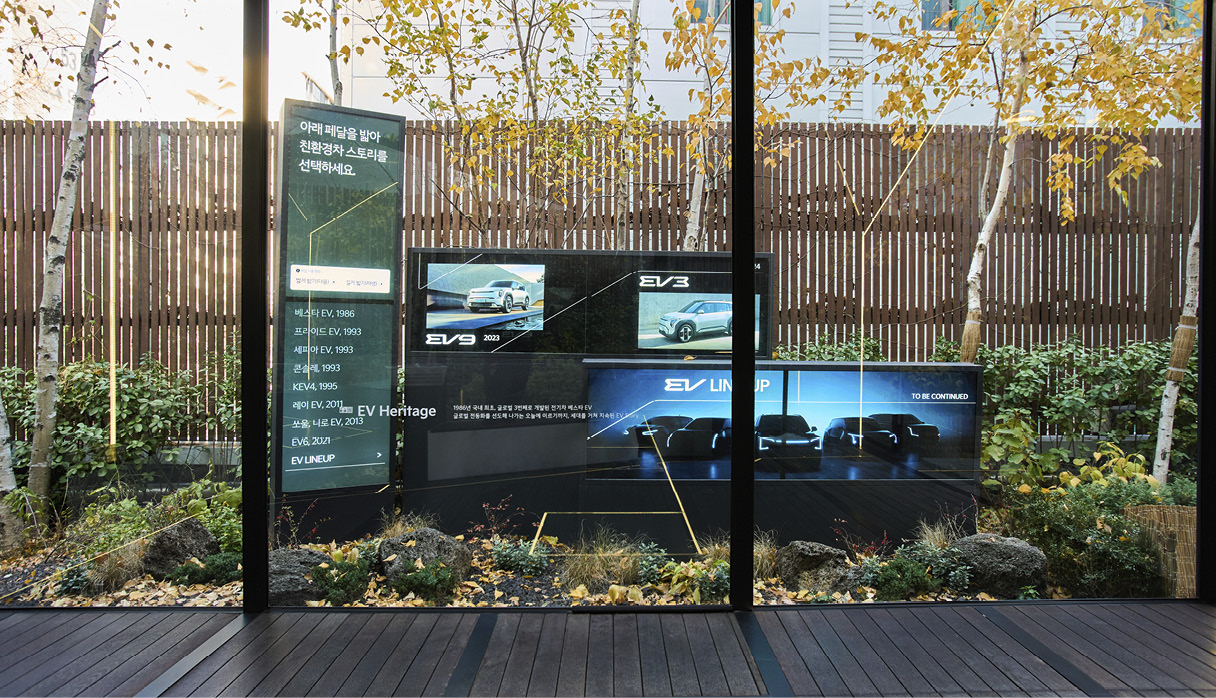
The exhibit also highlighted Kia's current and future electric vehicles, offering a comprehensive look at the brand's electric journey. Featured models included the Ray EV, Kia's first mass-produced electric car; the Soul EV and Niro EV, which have driven the growth of South Korea's EV market; the EV6, the first dedicated electric vehicle built on the E-GMP platform; and Kia's vision for future EVs poised to make electric mobility mainstream. Detailed videos provided an immersive experience of these vehicles and their innovative technologies.
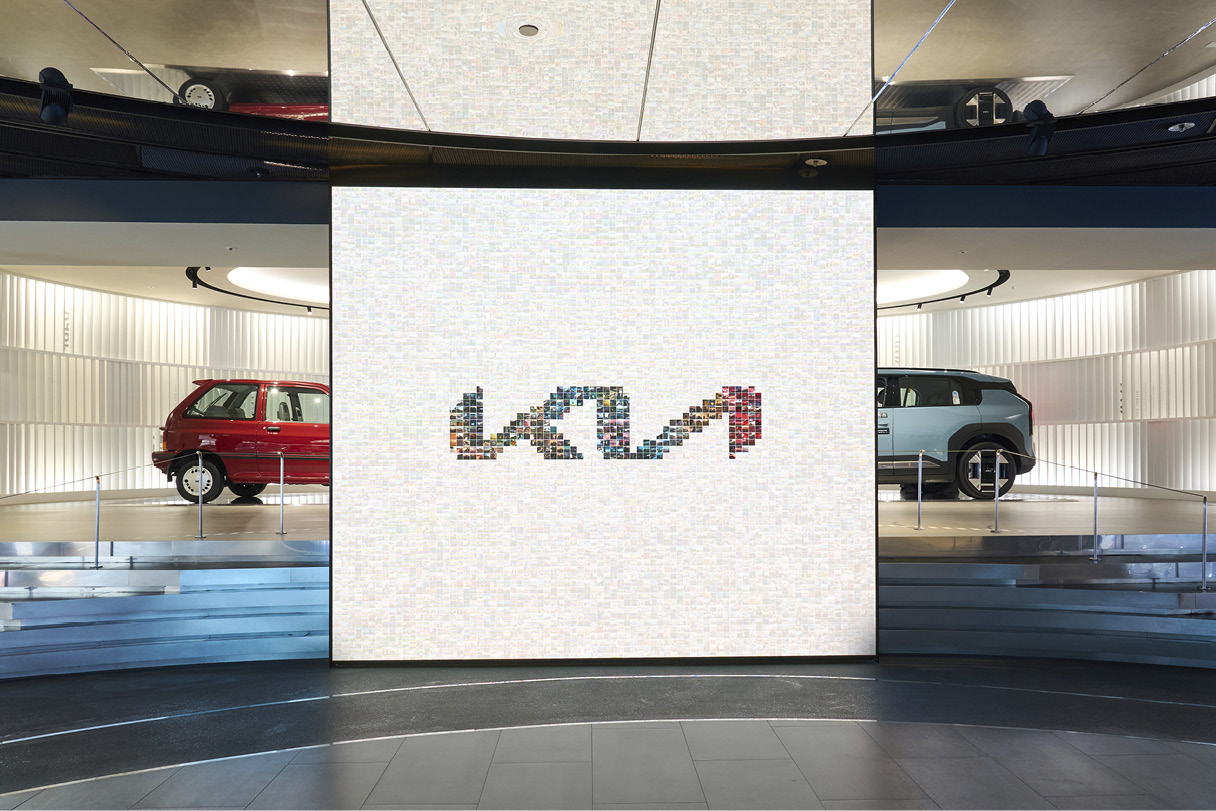
This heritage exhibition isn't just about cars—it's a window into 80 years of Kia's journey and the evolving societal landscapes it has influenced. It's a must-see for automotive enthusiasts and history buffs alike. Running until October, the exhibit requires no prior reservation and offers docent-led tours for an enriched experience.
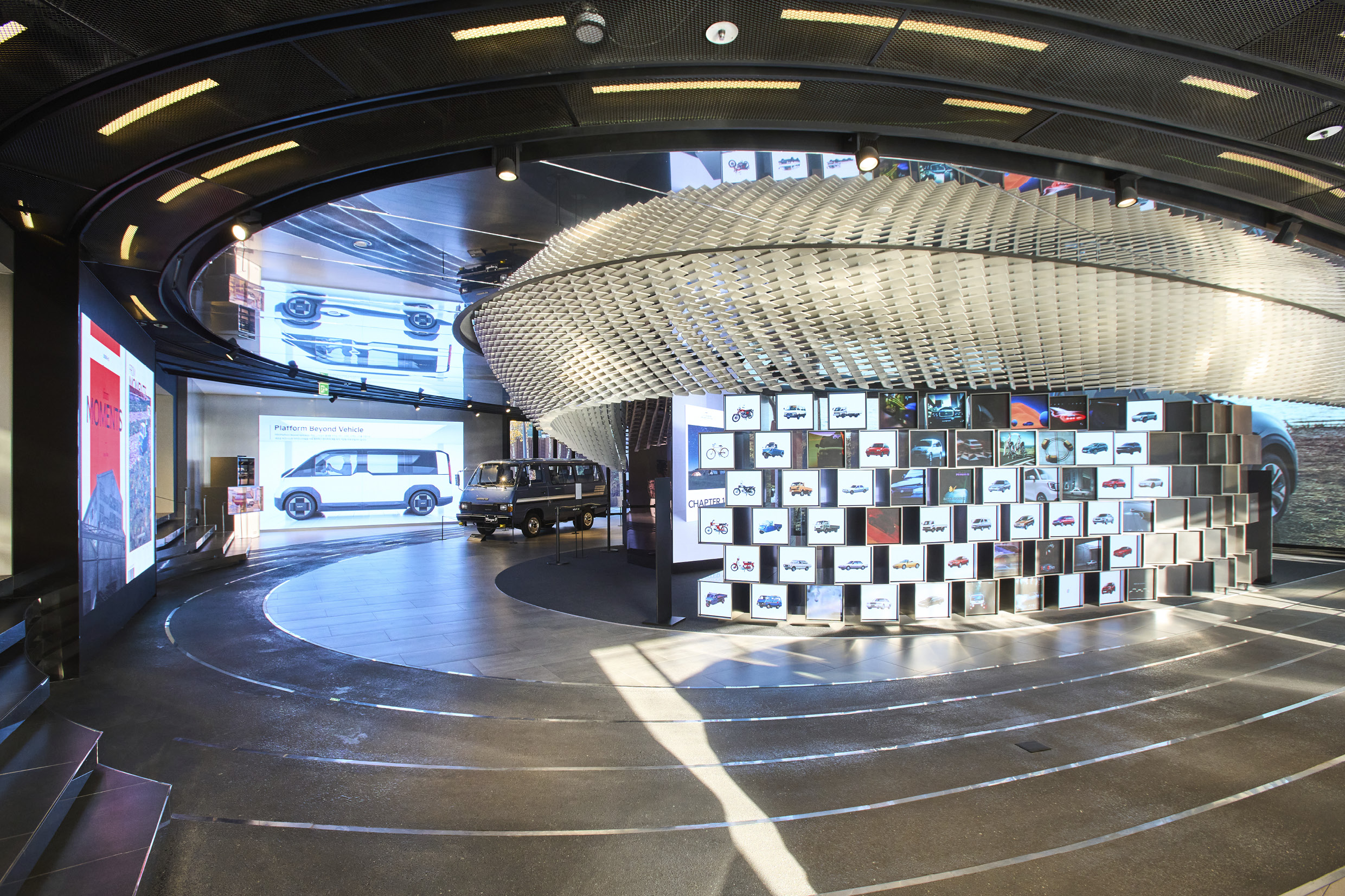
Through this exhibition, visitors can feel the essence of Kia's 80-year commitment to mobility, emphasizing that the company has strived to be more than a car maker—it has been a trusted partner in improving lives. Kia's dedication to providing freedom of movement and innovative solutions stands out in every aspect of this showcase.
Looking ahead, Kia is committed to its vision of "providing sustainable mobility solutions." With groundbreaking products and services that inspire at every turn, Kia continues to reshape our everyday lives and lead us toward a better future. Here's to an exciting road ahead for Kia and its unwavering drive for innovation.
Photography by Hyuk-soo Cho
Video by HMG Journal